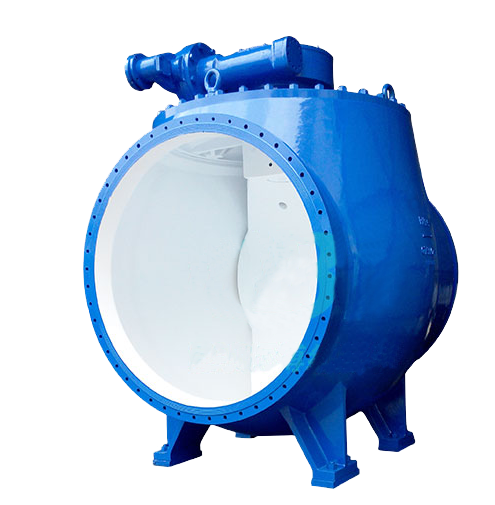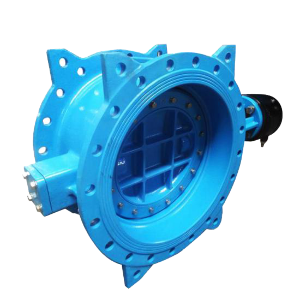In today’s increasingly complex industrial landscape, where working conditions are becoming more demanding, valve selection plays a critical role not only in equipment efficiency but also in the overall safety and stability of the system.
Among various options, the triple offset metal seated butterfly valve stands out for its superior sealing performance and structural advantages, making it widely applicable in high-temperature, high-pressure, and corrosive service conditions.
Notably, the use of a C95500 aluminum bronze metal sealing structure has become the preferred choice for many engineering projects due to its durability and performance in harsh environments.
This article offers a comprehensive analysis of the core value of triple offset metal seated butterfly valves—covering their design principles, material characteristics, and routine maintenance—to help you fully unlock the potential of this high-performance valve solution.
I: Structural Advantages of Triple Offset Butterfly Valves
The term "triple offset" refers to three distinct offsets between the valve stem and the sealing geometry:
• First offset: The valve stem is not centered with the valve body passageway.
• Second offset: The valve stem is offset from the centerline of the sealing surface.
• Third offset: The sealing surface of the valve seat is conical and does not share a common center with the sealing surface of the disc.
Compared with traditional concentric (centerline) butterfly valves, the triple offset design brings revolutionary improvements:
• Friction-free operation, significantly extending service life
• Bidirectional sealing capability, with no restriction on installation direction
• Higher pressure class compatibility, suitable for high-pressure, high-temperature, and demanding applications
The key advantage of this structure lies in its ability to achieve a metal-to-metal torque-seated seal with virtually zero friction during opening and closing.During operation, the disc and seat do not contact until the final shutoff position, where sealing is achieved through precise torque engagement.This makes the valve particularly ideal for conditions involving high pressure, elevated temperatures, or frequent actuation cycles.
II. Why Choose C95500 Aluminum Bronze?
1. Material Overview
C95500 is a high-strength nickel-aluminum bronze alloy (Cu-Al-Fe-Ni), widely recognized as an ideal material for valve components—especially sealing rings, valve seats, and discs—in demanding applications such as marine engineering, mining, water treatment, and chemical processing.
2. Key Performance Advantages of C95500
• Superior Mechanical Strength
C95500 aluminum bronze delivers excellent tensile and yield strength, outperforming most standard copper alloys and even some stainless steels. This makes it highly reliable for high-pressure valve applications.
• Excellent Wear and Fatigue Resistance
With its high hardness, the alloy resists abrasion and surface deformation. Its high fatigue strength makes it ideal for valves in frequent cycling and pressure-fluctuating conditions, ensuring long service life under mechanical stress.
• Outstanding Toughness and Ductility
The alloy maintains good plasticity and impact resistance alongside its high strength. This prevents brittle fractures, making it suitable for harsh working conditions involving dynamic loads or mechanical shocks.
• Exceptional Corrosion Resistance
C95500 demonstrates outstanding resistance to seawater, saline environments, acidic and alkaline media, as well as industrial fluids such as cooling water, slurry, and chemical mixtures. It is particularly well-suited for offshore platforms, desulfurization systems, and non-ferrous metal mining operations, where erosion and corrosion threats coexist.
As a result, C95500 aluminum bronze is especially suitable for use in offshore platforms, flue gas desulfurization systems, and non-ferrous metal mining operations, where corrosion and erosion coexist in extreme service environments.
III. Maintenance Guide for Triple Offset C95500 Butterfly Valves
1. Regular Cleaning of Valve Body and Sealing Surfaces
2. Inspection of Actuators and Sealing Components
3. Lubrication of Moving Parts
4. Corrosion and Rust Prevention
Ⅳ. Conclusion
The successful application of triple offset metal seated butterfly valves lies not only in their advanced structural design but also in the superior material selection. C95500 aluminum bronze alloy, with its exceptional combination of pressure resistance, wear resistance, and corrosion resistance, has become a standout material in the butterfly valve industry. When coupled with proper maintenance practices, these valves can significantly extend service life while reducing operational risks and maintenance costs.
▲Q&A – Common Questions about C95500 Triple Offset Butterfly Valves
Q1: Can C95500 aluminum bronze butterfly valves replace stainless steel butterfly valves?
A1: In many highly corrosive environments—such as seawater, slurry, or acidic/alkaline media—C95500 offers better resistance than certain types of stainless steel. However, for strong oxidizing acids or high-temperature oxidative conditions, media compatibility must be carefully evaluated.
Q2: Does the sealing pair using C95500 require additional hardening treatment?
A2: In most cases, no additional surface hardening is needed, as C95500 already offers sufficient strength and hardness to handle common working conditions. However, for highly abrasive applications, it can be paired with hardfaced or ceramic-coated sealing components to enhance durability.
Q3: Is it suitable for potable water systems?
A3: Yes. C95500 complies with NSF/ANSI 61 standards, making it suitable for potable water and hygiene-critical systems. Still, we recommend reviewing the latest material compliance certifications prior to use.
Q4: What is the recommended maintenance frequency?
A4: Maintenance frequency should be based on actual service conditions. General recommendations are:
• Normal conditions:Clean and inspect every 3 to 6 months;
• Highly corrosive or high-cycle operations:Inspect every1 to 2 months

